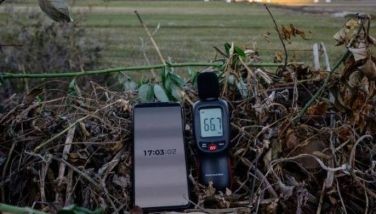UN weather body: Antarctic ozone hole expands due to cold
GENEVA — The Antarctic ozone hole has swelled this month to one of its biggest sizes on record, U.N. and U.S. scientists say, insisting that the Earth-shielding ozone layer remains on track to long-term recovery but residents of the southern hemisphere should be on watch for high UV levels in the weeks ahead.
The World Meteorological Organization, in a regular bulletin released Thursday, said the Antarctic ozone hole often faces seasonal and year-to-year variations, but says the expansion this year shows "we need to remain vigilant."
The Geneva-based U.N. agency pointed to NASA data on Oct. 2 showing the hole had reached 28.2 million square kilometers (10.9 million square miles) — larger than the size of Russia and Canada put together. It was the largest recorded on that date, and the hole has remained at a record size on the dates since, WMO said.
According to NASA, the record largest ozone hole dates to Sept. 9, 2000, when it was 29.9 million square kilometers.
Paul Newman, chief scientist for earth sciences at NASA's Goddard Space Flight Center in Greenbelt, Maryland, said prolonged wintertime conditions in the Antarctic region were persisting longer than usual, and that unusually weak vertical energy flows were among major contributors to the exceptionally large hole.
The stratospheric ozone layer, which sits some 25 kilometers (18 miles) high and protects against harmful UV rays, is different from the ground level ozone that is a harmful pollutant. The ozone layer had been thinning since the late 1970s because man-made chlorofluorocarbons often used as refrigerants and aerosol cans released chlorine and bromine that destroyed ozone molecules high in the air.
A widely respected international accord in 1987 to phase out use of ozone-depleting chemicals has underpinned hopes for recovery of stratospheric ozone worldwide by 2070. WMO and NASA say the one-off expansion of the ozone hole this year will have little to no impact on the overall trend toward that goal.
Newman said the particularly strong El Nino this year was "the first thing that comes to your mind" but added there was no evidence yet of any connection between that and the larger ozone hole, and scientists will need time to explore the possible causes. He also said NASA model simulations have generally turned up very little effect on the Antarctic ozone hole from climate change and an increase in heat-trapping greenhouse gases in the atmosphere.
As for the human impact, Newman said: "The worry is the persistence of low ozone and the continued rising of the sun will contribute to a higher UV index" in the southern hemisphere. He said patterns suggest that the ozone hole will remain large through November, and the inhabitants of the region should monitor ultraviolet conditions, which in excess can foster health trouble like cataracts, sunburn and even skin cancer.
"If I lived down there, I would keep an eye on the UV forecast," he said.
- Latest
- Trending


































